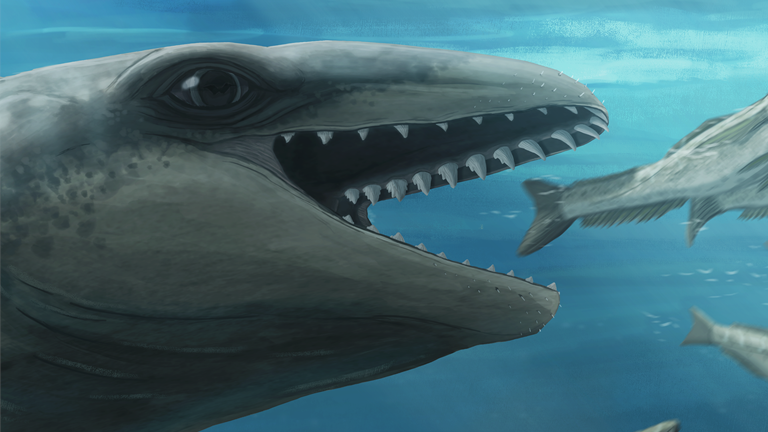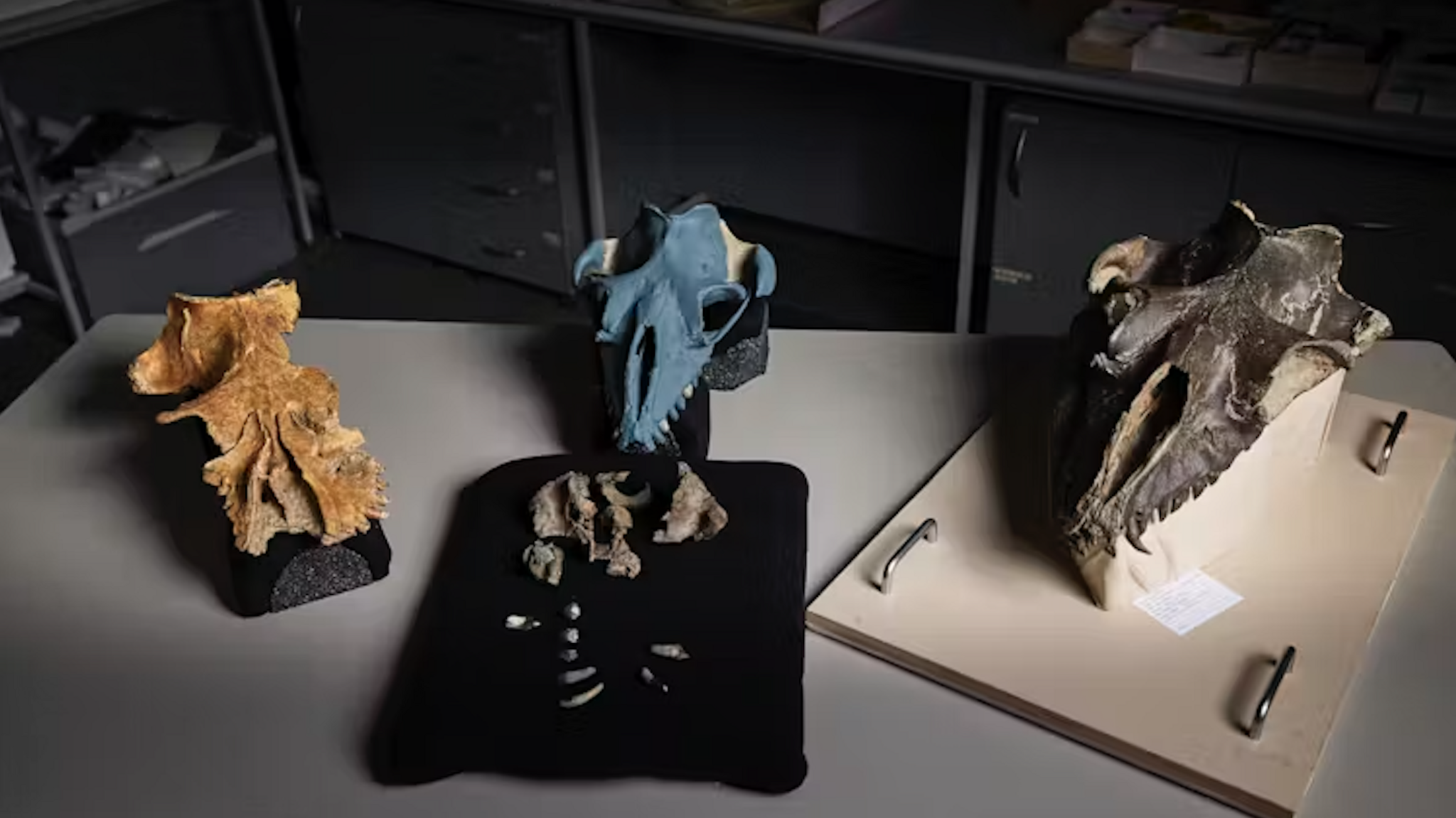New species of ancient whale discovered on Australia's coast

- Published
An 26-million-year-old whale species has been identified from a fossil found on Australia's southeastern coast.
With sharp teeth and bulging eyes, and at just two metres long, it would've been very different to the huge mammals we know today.
The species belongs to a group known as mammalodontids, early whales that lived around 30 to 23 million years ago.
The fossil, part of a skull with teeth and ear bones, was discovered in 2019 along the state of Victoria's coast.
Local resident, Ross Dullard, then donated it to Museums Victoria and the fossil Janjucetus dullardi was named in his honour.
The research is published in Zoological Journal of the Linnean Society.
100-million-year-old fossil of underwater beast found
- Published7 December 2022
Schoolgirl discovers fossil of huge prehistoric sea reptile
- Published18 April 2024
Ocean fossils that are millions of years old, found under US school
- Published19 September 2024
The Janjucetus dullardi was, according to Ruairidh Duncan, PhD student at the Museums Victoria Research Institute and Monash University and one the authors of the research, "deceptively cute".
"It might have looked for all the world like some weird kind of mash-up between a whale, a seal and a Pokémon but they were very much their own thing," says Dr Erich Fitzgerald, senior curator of vertebrate palaeontology at Museums Victoria Research Institute.
The study says the fossilised skull belonged to a young sea mammal just over two metres long.
Unlike the whales we know today it would fit easily on a single bed!
Experts say that the coastal waters of Australia, between 27 and 23 million years ago, were home to many types of whales.
This is the third known mammalodontid species from that region in Australia, and only the fourth found worldwide.

Fossil skulls of mammalodontid whales from left to right: Mammalodon colliveri, Janjucetus dullardi, Janjucetus hunderi.
The whales we know today don't usually have teeth, but plates called baleen, which filter plankton like a comb.
Mammalodontids, in contrast, were smaller and had a jaw of sharp teeth.
Despite their differences experts say these early whales are still descendants of sea mammals like the blue and humpback whales.
Because the fossil has its teeth and inner ear structures preserved in such detail, it provides key information as to how early whales fed, heard and moved in the water.
The authors of the research say the fossil shows how ancient whales changed and could give clues as to how today's marine life might respond to climate change.
'This region was once a cradle for some of the most unusual whales in history, and we're only just beginning to uncover their stories,' said Fitzgerald.
